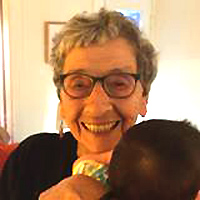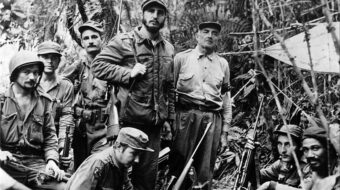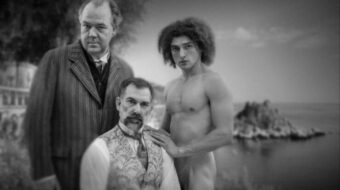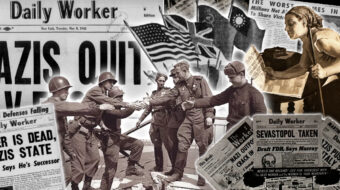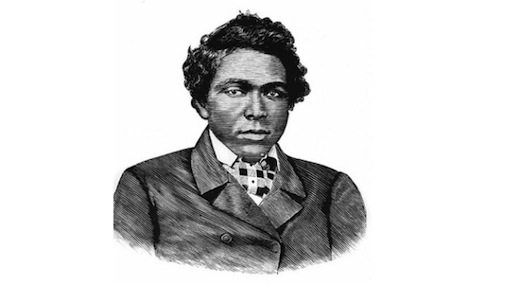
The book, “The Fire of Freedom, Abraham Galloway & the Slaves’ Civil War,” opens with two guns held to the head of the Union Army recruiter. That was by order of Abraham Galloway, an African-American leader of the enslaved men who wanted to join the Union Army. Not until the recruiter meets their demands, does Galloway order the guns lowered and allow the recruiter to leave. The demands were: promise of equal pay for the new recruits, schools for their children, jobs for women and provisions for their families. Above all, was the demand that the Union Army would force the confederacy to treat captured soldiers as prisoners of war and not re-enslave or execute
In turn, the recruiter left with Galloway’s promise to recruit an entire African American regiment in just a few days. Five days later, 4,000 men, women and children marched into the Union Army camp in New Bern, North Carolina. The next day hundreds more came and a brigade was formed. Galloway was only 26 at the time.
A bricklayer by trade, Galloway had escaped from bondage at age 20 and made it all the way to safety in Canada. But he wanted more than safety for himself. Not only did he return to bring his mother to freedom, he became a leader of the abolition cause and built a network of freedom fighters deep in the Slave South.
Different picture of Civil War
Through the short life of Abraham Galloway, David Cecelski brings us a very different picture of the Civil War than is taught in most schools. I recommend “The Fire of Freedom” for the truer picture it presents. In his prologue, Cecelski credits “the great W.E.B. Du Bois”, author of “Black Reconstruction” (1935), with showing the essential role of the slaves in winning the war. Their “General Strike” drained the strength of the Confederacy and they supplied 180,000 of the best Union Army volunteers. Over half of the African American Union soldiers were recruited from the South. But this analysis by Du Bois was pushed aside by racism and McCarthy-type red baiting. Fortunately, Cecelski tells us, “A new generation of scholars has begun to rediscover that powerful tradition of African American militancy within the Civil War South.”
As a reviewer, I was struck by the advanced and modern tone of speeches by Abraham Galloway and other African American abolitionists. I should not have been surprised by the class-consciousness of their outlook. After all, Karl Marx and Friedrich Engels were among the widely read writers for the Tribune, founded by Horace Greeley in 1841. The rallying cry of “Workers of the World Unite!” had already appeared in the “Communist Manifesto” in 1848.
Galloway insisted, “The war would emancipate the poor white man of the south, as well as the blacks.” He continued to fight for all working people after the Civil War. At the 1868 North Carolina Constitutional Convention, a newspaper quoted him as saying, “I came here to help the poor white man, as well as the colored man, and to do justice to all men.” Cecelski points out that Galloway made this statement although he was one of only thirteen blacks out of 120 elected to the convention and felt a special responsibility to represent the political concerns of the states’ African American population.
An even more pointed statement by John Mercer Langston shows the class-consciousness of many African American leaders of that time. At the 1864 National Convention of Colored Men of the United States, Langston called for delegates to “resist not only slavery but also the ‘system of oligarchy’ that led to civil war and that oppressed poor and working class people of all races.”
The right to vote and women’s rights
On April 29, 1864, Galloway led a delegation of liberated former slaves to a meeting with President Lincoln. The delegation included a brick mason (Galloway), two barbers (one also a carpenter), a farmer, a baker and a preacher. They presented Lincoln with a petition thanking him for the Emancipation Proclamation. Then they insisted, in the words of the petition, “…finish the noble work you have begun, and grant to your petitioners that greatest of privileges, when the State is reconstructed, to exercise the right of suffrage . . . “.
It was universal suffrage that Galloway and the liberated slaves were fighting for, free of property restrictions and most definitely including women. (At this point, I will stray from Cecelski’s book to say that the alliance between the African-American equality movement and the movement for women’s suffrage was supported by Frederick Douglass, Harriet Tubman and other great African-American leaders. If that alliance broke up later, it was not from the African-American side. )
As Ida B. Wells wrote in her Crusade of Justice, she had a disagreement with Susan B. Anthony, her good friend. Anthony admitted not supporting Black women who wanted to form a branch of the suffrage association. Anthony added, ” I did not want anything to get in the way of bringing the southern white women into our suffrage association. And you think I was wrong in so doing?” Wells wrote, “I answered uncompromisingly, yes, for I felt that although she may have made gains for suffrage she had also confirmed white women in their attitude of segregation.”
Galloway’s strong support for women’s rights was visible at an African American conference held three days before the North Carolina Constitutional Convention. Although the delegates were all men, half the seats were reserved for women, an unheard of practice at the state’s white political convention. Elected twice to the state Senate, Galloway voted to ratify the 14th and 15th amendments to the U. S. Constitution. He introduced a bill to limit the workday to ten hours but it did not pass. In 1869 and 1870, Galloway introduced bills for women’s suffrage and against domestic violence. But these bills for women’s rights did not become law in North Carolina until 50 years later.
Public education
Most prominent of all the freedmen’s demands was public education available to all. When the Klu Klux Klan used terror to attack the freedmen’s rights, the KKK killed teachers and students and burned down school buildings. It was a fight all the way. The hunger for education was huge, as explained by Robert Hamilton, a black journalist from New York City. “The number of scholars is very great, and continually augmenting being fed by escaping bondmen who come from plantations within a sixty mile radius of this place . . . Study they will and it is useless for their teachers to tell them to stop even for a few moments.”
For the former slaves whom Galloway had recruited for the Union Army, schooling began while still in their barracks. The soldiers had built their own barracks to replace the tents issued by the Army. Officers organized literacy classes. Galloway told William Lloyd Garrison’s Liberator, “The badge of slavery is superseded by the U.S. uniform. And the reading book and the slate are the accompaniments of these former victims of ignorance wherever they go. They hunger for the ‘forbidden fruit’ of knowledge with a zest of appetite which imparts marvelous powers of acquisition.”
This eloquent praise of learning makes it hard to believe Cecelski’s claim that Galloway himself never learned to read and write. This is a man who went toe to toe with the best legal minds of his day. That was true on the floor of the state Senate as well as in the writing of the state Constitution. If Galloway were truly illiterate, that would make his achievements all the more remarkable. But I suppose it’s possible. I have certainly marveled at the ability of Stephen Hawking to remember trunk loads of abstract knowledge without the use of books or Internet. In meeting Calloway, we have met one of the great people in our history.
Short but well-lived life
On September 1, 1870, at the age of 33, Abraham Galloway died unexpectedly. Just before his death, he had escaped two assassination attempts. He had surely lived a very vigorous life up to the day before he died. The cause of death is not known. Although he died broke, 7,000 people came to his funeral in Wilmington, N.C. His unrelenting fight for freedom continues to inspire us today.
Photo: Sketch of Abraham Galloway reprinted with permission from the North Carolina Museum of History.
Book review
“The Fire of Freedom, Abraham Galloway & the Slaves’ Civil War”
By David Cecelski
The University of North Carolina Press, 2012, 352 pp (hardcover)


